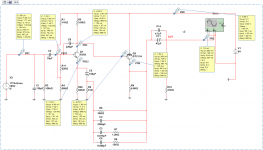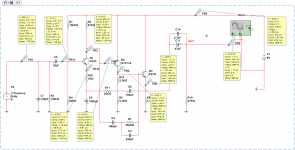You tried the AF379? Is a very low noise Ge for hi-end color TV from late 60's and 70's. The quoted noise for RF range is very low, lower than most Si signal transistors, so chances for noise being low in audio are great even without paralleling. I bet less noise than eg. the famous 2SC2574E. In top-end TVs this transistor was replaced only by dual gate MOSFETs in the 80's. Caution is needed against RF oscillations since is a good performer even at GHz range...
The MP38 "seems" to have rbb' in the 220R region judjing by the poor translation I made from a russian datasheet. I have some and for normal line level the noise is excellent, but I'm tempting to try RF ones like AF379 for gain stages for a complete Ge phono preamp, along with GT311 and 313 (RF "almost" complementary pair).
Thanks for the info. I have a reasonable selection of old Ge transistors so I’ll look in there for some AF379s. Perhaps the MC head amp with germaniums could be a reality after all. Do you have to hand the rbb for it?
.Thanks for the info. I have a reasonable selection of old Ge transistors so I’ll look in there for some AF379s. Perhaps the MC head amp with germaniums could be a reality after all. Do you have to hand the rbb for it?
I have low noise GE transistor P28 (П28) for RIAA corrector and correct Spice model for this transistor. I have 22 simulate circuits in MultiSim 14.0 with this transistor for RIAA corrector.
.
.Ok, P28 looks to be available at AAT Ltd as well. comaat.com
There is only one problem with transistor P28 (P27A, P27B) Uke = 5 Volt
.
That's fine for low level MC and MM use. But might need to be protected so that the Vce doesn’t exceed 5V. Perhaps a cascode circuit?
See attachments 1.
.
.
Attachments
-
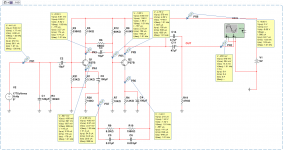 RIAA_P27B_1.png262.3 KB · Views: 924
RIAA_P27B_1.png262.3 KB · Views: 924 -
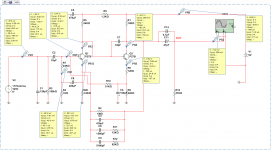 RIAA_P27B_9.png255.7 KB · Views: 311
RIAA_P27B_9.png255.7 KB · Views: 311 -
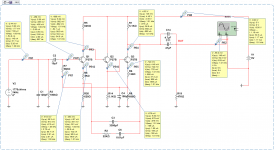 RIAA_P27B_8.png244 KB · Views: 242
RIAA_P27B_8.png244 KB · Views: 242 -
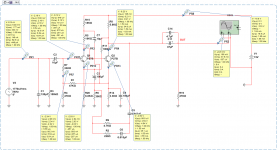 RIAA_P27B_7.png251.6 KB · Views: 228
RIAA_P27B_7.png251.6 KB · Views: 228 -
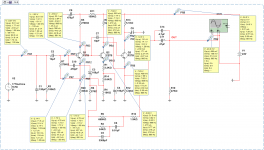 RIAA_P27B_6.png310.1 KB · Views: 233
RIAA_P27B_6.png310.1 KB · Views: 233 -
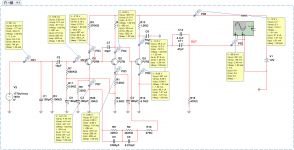 RIAA_P27B_5.png284.7 KB · Views: 224
RIAA_P27B_5.png284.7 KB · Views: 224 -
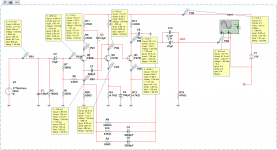 RIAA_P27B_4.png280.9 KB · Views: 818
RIAA_P27B_4.png280.9 KB · Views: 818 -
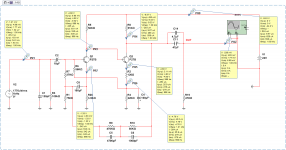 RIAA_P27B_3_Telefunken.png240.6 KB · Views: 840
RIAA_P27B_3_Telefunken.png240.6 KB · Views: 840 -
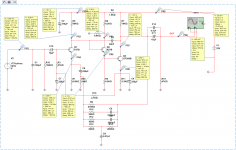 RIAA_P27B_2_1.png308.5 KB · Views: 825
RIAA_P27B_2_1.png308.5 KB · Views: 825 -
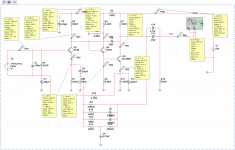 RIAA_P27B_2.png290 KB · Views: 910
RIAA_P27B_2.png290 KB · Views: 910
Last edited:
See attachments 2.
.
.
Attachments
-
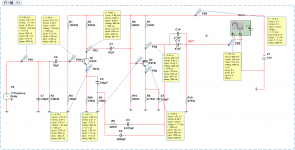 RIAA_P27B_20.png249.8 KB · Views: 168
RIAA_P27B_20.png249.8 KB · Views: 168 -
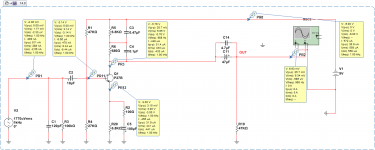 RIAA_P27B_18.png192.5 KB · Views: 154
RIAA_P27B_18.png192.5 KB · Views: 154 -
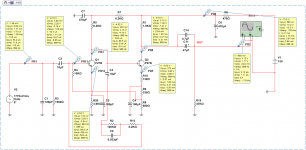 RIAA_P27B_17.png248.4 KB · Views: 153
RIAA_P27B_17.png248.4 KB · Views: 153 -
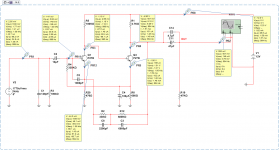 RIAA_P27B_16.png219.2 KB · Views: 152
RIAA_P27B_16.png219.2 KB · Views: 152 -
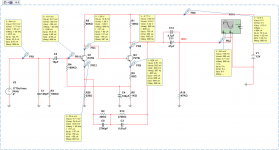 RIAA_P27B_15.png219 KB · Views: 140
RIAA_P27B_15.png219 KB · Views: 140 -
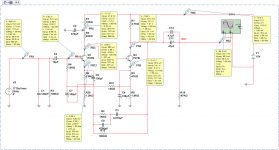 RIAA_P27B_14.png257.9 KB · Views: 147
RIAA_P27B_14.png257.9 KB · Views: 147 -
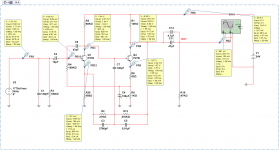 RIAA_P27B_13.png227 KB · Views: 135
RIAA_P27B_13.png227 KB · Views: 135 -
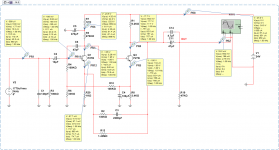 RIAA_P27B_12.png243.7 KB · Views: 147
RIAA_P27B_12.png243.7 KB · Views: 147 -
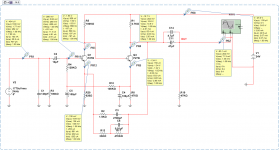 RIAA_P27B_11.png229.9 KB · Views: 172
RIAA_P27B_11.png229.9 KB · Views: 172 -
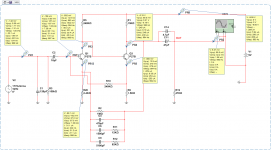 RIAA_P27B_10.png218.1 KB · Views: 221
RIAA_P27B_10.png218.1 KB · Views: 221
Last edited:
.Just wonder why would you use obsolete Germanium in any new design.
The sound of germanium transistors is much closer to a tube sound, than silicon transistors.
There is "Warm tube sound".
.
Last edited:
Good that you’re fiddling with germaniums. On the nfb designs the input impedance varies with frequency, and on some of the circuits the input impedance is also very low, difficult for a MM cartridge to drive without rolling off in the top end.
Have you tried using them in a headphone amp circuit?
Have you tried using them in a headphone amp circuit?

Posts discussing germanium devices for use in MM/MC head amp designs have been split off from original headphone amp thread.
Thanks for the info. I have a reasonable selection of old Ge transistors so I’ll look in there for some AF379s. Perhaps the MC head amp with germaniums could be a reality after all. Do you have to hand the rbb for it?
Not quite germanium. But still.
Германиевый усилитель для наушников. (разработка) - Страница 3 - Форум
Was more successful schemes germanium fono . For example Shure M-61, or Telefunken TV-206 . The supply voltage of 30 to 32 volts . I was made 2 devices on these schemes . Sound very good .I use them for several years .Vinyl Engine -Germanium phono preamp (5) , Vinyl Engine -Germanium phono preamp (3) , Vinyl Engine -Germanium phono preamp (7) , Vinyl Engine -Germanium phono preamp (8)
Last edited:
Are germanium transistors actually low noise at audio frequencies, the crystal purity and cleanliness was just not that good in their time? Add that germanium has no passivation method equivalent to silicon oxide or nitride, so long term contamination and corrosion is possible.
The early Ge parts were horribly hissy. We were still getting them into the 1970s in low-low-cost gear.
The Russians made a LOT of Ge devices after the rest of the world had the fad for Silicon. I hear reports that some of the Russian devices were quite low noise. Russian Ge is readily available as new Russia cleans-out the USSR military back-inventory. Which ones are "quiet" I have no idea.
Aside from the passivation techniques found for Silicon, it was the custom to pot Ge with greases or solvents (benzene) to reduce surface states as well as improve cooling.
The Russians made a LOT of Ge devices after the rest of the world had the fad for Silicon. I hear reports that some of the Russian devices were quite low noise. Russian Ge is readily available as new Russia cleans-out the USSR military back-inventory. Which ones are "quiet" I have no idea.
Aside from the passivation techniques found for Silicon, it was the custom to pot Ge with greases or solvents (benzene) to reduce surface states as well as improve cooling.
I used the transistors AC-122 ( Telefunken ) . Noise level they have the same as the transistors of the USSR . h21e they have more than the transistors of the USSR . . Germanium Phono had more noise than silicon devices . But also-had a great sound .
He is often even better than a tube. Not to mention silicon..
The sound of germanium transistors is much closer to a tube sound, than silicon transistors.
There is "Warm tube sound".
Some of us actually want a transparent amp that doesn't pollute the signal with "warmth" or any other woolly adjective! Uncorrupted signals please. The idea of using low performance Ge transistors is unappealing except perhaps from a retro perspective - sure its a design challenge, but its not going to be the best way...
The original comment about low noise of the AF379 completely ignores the flicker-noise knee frequency - 600MHz capable RF transistors' noise specs seldom give this, and typically noise increases with decreasing frequency, sometimes dramatically, you cannot infer audio noise performance from RF noise performance - you'd have to measure it rather than extrapolate from 100MHz data.
The original comment about low noise of the AF379 completely ignores the flicker-noise knee frequency - 600MHz capable RF transistors' noise specs seldom give this, and typically noise increases with decreasing frequency, sometimes dramatically, you cannot infer audio noise performance from RF noise performance - you'd have to measure it rather than extrapolate from 100MHz data.
Some of us actually want a transparent amp that doesn't pollute the signal with "warmth" or any other woolly adjective!
Do you assume the preamp under discussion has such flavour? Why? Harmonic spectrum? Noise? Are either of these really excessive?
A "transparent amp" is an unattainable ideal, real amps are all about trade offs and compromise.
- Status
- Not open for further replies.
- Home
- Source & Line
- Analogue Source
- Germanium MM/MC Head Amp
